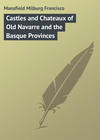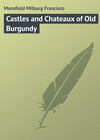Buch lesen: «Dumas' Paris»
CHAPTER I.
A GENERAL INTRODUCTION
There have been many erudite works, in French and other languages, describing the antiquities and historical annals of Paris from the earliest times; and in English the mid-Victorian era turned out – there are no other words for it – innumerable “books of travel” which recounted alleged adventures, strewn here and there with bits of historical lore and anecdotes, none too relevant, and in most cases not of undoubted authenticity.
Of the actual life of the people in the city of light and learning, from the times of Napoleon onward, one has to go to the fountainhead of written records, the acknowledged masterworks in the language of the country itself, the reports and annuaires of various sociétês, commissions, and what not, and collect therefrom such information as he finds may suit his purpose.
In this manner may be built up a fabric which shall be authentic and proper, varied and, most likely, quite different in its plan, outline, and scope from other works of a similar purport, which may be recalled in connection therewith.
Paris has been rich in topographical historians, and, indeed, in her chroniclers in all departments, and there is no end of relative matter which may be evolved from an intimacy with these sources of supply. In a way, however, this information ought to be supplemented by a personal knowledge on the part of the compiler, which should make localities, distances, and environments – to say nothing of the actual facts and dates of history – appear as something more than a shrine to be worshipped from afar.
Given, then, these ingredients, with a love of the subject, – no less than of the city of its domicile, – it has formed a pleasant itinerary in the experiences of the writer of this book to have followed in the footsteps of Dumas père, through the streets that he knew and loved, taking note meanwhile of such contemporary shadows as were thrown across his path, and such events of importance or significance as blended in with the scheme of the literary life of the times in which he lived, none the less than of those of the characters in his books.
Nearly all the great artists have adored Paris – poets, painters, actors, and, above all, novelists.
From which it follows that Paris is the ideal city for the novelist, who, whether he finds his special subjects in her streets or not, must be inspired by this unique fulness and variety of human life. Nearly all the great French novelists have adored Paris. Dumas loved it; Victor Hugo spent years of his time in riding about her streets on omnibuses; Daudet said splendid things of it, and nearly, if not quite, all the great names of the artistic world of France are indissolubly linked with it.
Paris to-day means not “La Ville,” “La Cité,” or “L’Université,” but the whole triumvirate. Victor Hugo very happily compared the three cities to a little old woman between two handsome, strapping daughters.
It was Beranger who announced his predilection for Paris as a birthplace. Dumas must have felt something of the same emotion, for he early gravitated to the “City of Liberty and Equality,” in which – even before the great Revolution – misfortune was at all times alleviated by sympathy.
From the stones of Paris have been built up many a lordly volume – and many a slight one, for that matter – which might naturally be presumed to have recounted the last word which may justifiably have been said concerning the various aspects of the life and historic events which have encircled around the city since the beginning of the moyen age.
This is true or not, according as one embraces a wide or a contracted horizon in one’s view.
For most books there is, or was at the time of their writing, a reason for being, and so with familiar spots, as with well-worn roads, there is always a new panorama projecting itself before one.
The phenomenal, perennial, and still growing interest in the romances of Dumas the elder is the excuse for the present work, which it is to be hoped is admittedly a good one, however far short of exhaustiveness – a much overworked word, by the way – the volume may fall.
It were not possible to produce a complete or “exhaustive” work on any subject of a historical, topographical or æsthetic nature: so why claim it? The last word has not yet been said on Dumas himself, and surely not on Paris – no more has it on Pompeii, where they are still finding evidences of a long lost civilization as great as any previously unearthed.
It was only yesterday, too (this is written in the month of March, 1904), that a party of frock-coated and silk-hatted benevolent-looking gentlemen were seen issuing from a manhole in the Université quartier of Paris. They had been inspecting a newly discovered thermale établissement of Roman times, which led off one of the newly opened subterranean arteries which abound beneath Paris.
It is said to be a rival of the Roman bath which is enclosed within the walls of the present Musée Cluny, and perhaps the equal in size and splendour of any similar remains extant.
This, then, suggests that in every land new ground, new view-points, and new conditions of life are making possible a record which, to have its utmost value, should be a progressively chronological one.
And after this manner the present volume has been written. There is a fund of material to draw upon, historic fact, pertinent and contemporary side-lights, and, above all, the environment which haloed itself around the personality of Dumas, which lies buried in many a cache which, if not actually inaccessible, is at least not to be found in the usual books of reference.
Perhaps some day even more will have been collected, and a truly satisfying biographical work compiled. If so, it will be the work of some ardent Frenchman of a generation following that in which Alexandre Dumas lived, and not by one of the contemporaries of even his later years. Albert Vandam, perhaps, might have done it as it should have been done; but he did not do so, and so an intimate personal record has been lost.
Paris has ever been written down in the book of man as the city of light, of gaiety, and of a trembling vivacity which has been in turn profligate, riotous, and finally criminal.
All this is perhaps true enough, but no more in degree than in most capitals which have endured so long, and have risen to such greatness.
With Paris it is quantity, with no sacrifice of quality, that has placed it in so preëminent a position among great cities, and the life of Paris – using the phrase in its most commonly recognized aspect – is accordingly more brilliant or the reverse, as one views it from the boulevards or from the villettes.
French writers, the novelists in particular, have well known and made use of this; painters and poets, too, have perpetuated it in a manner which has not been applied to any other city in the world.
To realize the conditions of the life of Paris to the full one has to go back to Rousseau – perhaps even farther. His observation that “Les maisons font la ville, mais le citoyens font la cité,” was true when written, and it is true to-day, with this modification, that the delimitation of the confines of la ville should be extended so far as to include all workaday Paris – the shuffling, bustling world of energy and spirit which has ever insinuated itself into the daily life of the people.
The love and knowledge of Alexandre Dumas père for Paris was great, and the accessory and detail of his novels, so far as he drew upon the capital, was more correct and apropos. It was something more than a mere dash of local colour scattered upon the canvas from a haphazard palette. In minutiæ it was not drawn as fine as the later Zola was wont to accomplish, but it showed no less detail did one but comprehend its full meaning.
Though born in the provincial town Villers-Cotterets, – seventy-eight kilomètres from Paris on the road to Soissons, – Dumas came early in touch with the metropolis, having in a sort of runaway journey broken loose from his old associations and finally becoming settled in the capital as a clerk in the Bureau d’Orleans, at the immature age of twenty. Thus it was that his impressions and knowledge of Paris were founded upon an experience which was prolonged and intimate, extending, with brief intervals of travel, for over fifty years.
He had journeyed meantime to Switzerland, England, Corsica, Naples, the Rhine, Belgium, – with a brief residence in Italy in 1840-42, – then visiting Spain, Russia, the Caucasus, and Germany.
This covered a period from 1822, when he first came to Paris, until his death at Puys, near Dieppe, in 1870; nearly a full half-century amid activities in matters literary, artistic, and social, which were scarce equalled in brilliancy elsewhere – before or since.
In spite of his intimate association with the affairs of the capital, – he became, it is recalled, a candidate for the Chamber of Deputies at the time of the Second Republic, – Dumas himself has recorded, in a preface contributed to a “Histoire de l’Eure,” by M. Charpillon (1879), that if he were ever to compile a history of France he should first search for les pierres angulaires of his edifice in the provinces.
This bespeaks a catholicity which, perhaps, after all, is, or should be, the birthright of every historical novelist.
He said further, in this really valuable and interesting contribution, which seems to have been entirely overlooked by the bibliographers, that “to write the history of France would take a hundred volumes” – and no doubt he was right, though it has been attempted in less.
And again that “the aggrandizement of Paris has only been accomplished by a weakening process having been undergone by the provinces.” The egg from which Paris grew was deposited in the nest of la cité, the same as are the eggs laid par un cygne.
He says further that in writing the history of Paris he would have founded on “Lutetia (or Louchetia) the Villa de Jules, and would erect in the Place de Notre Dame a temple or altar to Ceres; at which epoch would have been erected another to Mercury, on the Mount of Ste. Geneviève; to Apollo in the Rue de la Barillerie, where to-day is erected that part of Tuileries built by Louis XIV., and which is called Le Pavillon de Flore.
“Then one would naturally follow with Les Thermes de Julien, which grew up from the Villa de Jules; the reunion under Charlemagne which accomplished the Sorbonne (Sora bona), which in turn became the favourite place of residence of Hugues Capet, the stronghold of Philippe-Auguste, the bibliothèque of Charles V., the monumental capital of Henri VI. d’Angleterre; and so on through the founding of the first printing establishment in France by Louis XI.; the new school of painting by François I.; of the Académie by Richelieu; … to the final curtailment of monarchial power with the horrors of the Revolution and the significant events which centred around the Bastille, Versailles, and the Tuileries.”
Leaving the events of the latter years of the eighteenth century, and coming to the day in which Dumas wrote (1867), Paris was truly – and in every sense —
“The capital of France, and its history became not only the history of France but the history of the world… The city will yet become the capital of humanity, and, since Napoleon repudiated his provincial residences and made Paris sa résidence impériale, the man of destiny who reigns in Paris in reality reigns throughout the universe.”
There may be those who will take exception to these brilliant words of Dumas. The Frenchman has always been an ardent and soi-disant bundle of enthusiasm, but those who love him must pardon his pride, which is harmless to himself and others alike, and is a far more admirable quality than the indifference and apathy born of other lands.
His closing words are not without a cynical truth, and withal a pride in Paris:
“It is true that if we can say with pride, we Parisians, ‘It was Paris which overthrew the Bastille,’ you of the provinces can say with equal pride, ‘It was we who made the Revolution.’”
As if to ease the hurt, he wrote further these two lines only:
“At this epoch the sister nations should erect a gigantic statue of Peace. This statue will be Paris, and its pedestal will represent La Province.”
His wish – it was not prophecy – did not, however, come true, as the world in general and France and poor rent Alsace et Lorraine in particular know to their sorrow; and all through a whim of a self-appointed, though weakling, monarch.
The era of the true peace of the world and the monument to its glory came when the French nation presented to the New World that grand work of Bartholdi, “Liberty Enlightening the World,” which stands in New York harbour, and whose smaller replica now terminates the Allée des Cygnes.
The grasp that Dumas had of the events of romance and history served his purpose well, and in the life of the fifties in Paris his was a name and personality that was on everybody’s lips.
How he found time to live the full life that he did is a marvel; it certainly does not bear out the theory of heredity when one considers the race of his birth and the “dark-skinned” languor which was supposedly his heritage.
One edition of his work comprises two hundred and seventy-seven volumes, and within the year a London publisher has announced some sixty volumes “never before translated.” Dumas himself has said that he was the author of over seven hundred works.
In point of time his romances go back to the days of the house of Valois and the Anglo-French wars (1328), and to recount their contents is to abstract many splendid chapters from out the pages of French history.
It would seem as though nearly every personage of royalty and celebrity (if these democratic times will allow the yoking together of the two; real genuine red republicans would probably link royalty and notoriety) stalked majestically through his pages, and the record runs from the fourteenth nearly to the end of the nineteenth century, with the exception of the reign of Louis XI.
An ardent admirer of Sir Walter Scott has commented upon this lapse as being accounted for by the apparent futility of attempting to improve upon “Quentin Durward.” This is interesting, significant, and characteristic, but it is not charitable, generous, or broad-minded.
CHAPTER II.
DUMAS’ EARLY LIFE IN PARIS
At fifteen (1817), Dumas entered the law-office of one Mennesson at Villers-Cotterets as a saute-ruisseau (gutter-snipe), as he himself called it, and from this time on he was forced to forego what had been his passion heretofore: bird-catching, shooting, and all manner of woodcraft.
When still living at Villers-Cotterets Dumas had made acquaintance with the art of the dramatist, so far as it was embodied in the person of Adolphe de Leuven, with whom he collaborated in certain immature melodramas and vaudevilles, which De Leuven himself took to Paris for disposal.
“No doubt managers would welcome them with enthusiasm,” said Dumas, “and likely enough we shall divert a branch of that Pactolus River which is irrigating the domains of M. Scribe” (1822).
Later on in his “Mémoires” he says: “Complete humiliation; we were refused everywhere.”
From Villers-Cotterets the scene of Dumas’ labours was transferred to Crépy, three and a half leagues distant, a small town to which he made his way on foot, his belongings in a little bundle “not more bulky than that of a Savoyard when he leaves his native mountains.”
In his new duties, still as a lawyer’s clerk, Dumas found life very wearisome, and, though the ancient capital of the Valois must have made an impress upon him, – as one learns from the Valois romances, – he pined for the somewhat more free life which he had previously lived; or, taking the bull by the horns, deliberated as to how he might get into the very vortex of things by pushing on to the capital.
As he tritely says, “To arrive it was necessary to make a start,” and the problem was how to arrive in Paris from Crépy in the existing condition of his finances.
By dint of ingenuity and considerable activity Dumas left Crépy in company with a friend on a sort of a runaway holiday, and made his third entrance into Paris.
It would appear that Dumas’ culinary and gastronomic capabilities early came into play, as we learn from the “Mémoires” that, when he was not yet out of his teens, and serving in the notary’s office at Crépy, he proposed to his colleague that they take this three days’ holiday in Paris.
They could muster but thirty-five francs between them, so Dumas proposed that they should shoot game en route. Said Dumas, “We can kill, shall I say, one hare, two partridges, and a quail… We reach Dammartin, get the hinder part of our hare roasted and the front part jugged, then we eat and drink.” “And what then?” said his friend. “What then? Bless you, why we pay for our wine, bread, and seasoning with the two partridges, and we tip the waiter with the quail.”
The journey was accomplished in due order, and he and his friend put up at the Hôtel du Vieux-Augustins, reaching there at ten at night.
In the morning he set out to find his collaborateur De Leuven, but the fascination of Paris was such that it nearly made him forswear regard for the flight of time.
He says of the Palais Royale: “I found myself within its courtyard, and stopped before the Theatre Français, and on the bill I saw:
“‘Demain, Lundi
Sylla
Tragédie dans cinq Actes
Par M. de Jouy’
“I solemnly swore that by some means or other … I would see Sylla, and all the more so because, in large letters, under the above notice, were the words, ‘The character of Sylla will be taken by M. Talma.’”
In his “Mémoires” Dumas states that it was at this time he had the temerity to call on the great Talma. “Talma was short-sighted,” said he, “and was at his toilet; his hair was close cut, and his aspect under these conditions was remarkably un-poetic… Talma was for me a god – a god unknown, it is true, as was Jupiter to Semele.”
And here comes a most delicious bit of Dumas himself, Dumas the egotist:
“Ah, Talma! were you but twenty years younger or I twenty years older! I know the past, you cannot foretell the future… Had you known, Talma, that the hand you had just touched would ultimately write sixty or eighty dramas … in each of which you would have found the material for a marvellous creation…”
Dumas may be said to have at once entered the world of art and letters in this, his third visit to Paris, which took place so early in life, but in the years so ripe with ambition.
Having seen the great Talma in Sylla, in his dressing-room at the Theatre Français, he met Delavigne, who was then just completing his “Ecole des Viellards,” Lucien Arnault, who had just brought out “Regulus;” Soumet, fresh from the double triumph of “Saul” and “Clymnestre;” here, too, were Lemercier, Delrien, Viennet, and Jouy himself; and he had met at the Café du Roi, Theadlon, Francis, Rochefort, and De Merle; indeed by his friend De Leuven he was introduced to the assemblage there as a “future Corneille,” in spite of the fact that he was but a notary’s clerk.
Leaving what must have been to Dumas the presence, he shot a parting remark, “Ah, yes, I shall come to Paris for good, I warrant you that.”
In “The Taking of the Bastille” Dumas traces again, in the characters of Pitou and old Father Billot, much of the route which he himself took on his first visit to Paris. The journey, then, is recounted from first-hand information, and there will be no difficulty on the part of any one in tracing the similarity of the itinerary.
Chapter I., of the work in question, brings us at once on familiar ground, and gives a description of Villers-Cotterets and its inhabitants in a manner which shows Dumas’ hand so unmistakably as to remove any doubts as to the volume of assistance he may have received from others, on this particular book at least.
“On the borders of Picardy and the province of Soissons, and on that part of the national territory which, under the name of the Isle of France, formed a portion of the ancient patrimony of our kings, and in the centre of an immense crescent, formed by a forest of fifty thousand acres, which stretches its horns to the north and south, rises, almost buried amid the shades of a vast park planted by François I. and Henri II., the small city of Villers-Cotterets. This place is celebrated from having given birth to Charles Albert Demoustier, who, at the period when our present history commences, was there writing his Letters to Emilie on Mythology, to the unbounded satisfaction of the pretty women of those days, who eagerly snatched his publications from each other as soon as printed.
“Let us add, to complete the poetical reputation of this little city, whose detractors, notwithstanding its royal château and its two thousand four hundred inhabitants, obstinately persist in calling it a mere village – let us add, we say, to complete its poetical reputation, that it is situated at two leagues distance from Laferte-Milan, where Racine was born, and eight leagues from Château-Thierry, the birthplace of La Fontaine.
“Let us also state that the mother of the author of ‘Britannicus’ and ‘Athalie’ was from Villers-Cotterets.
“But now we must return to its royal château and its two thousand four hundred inhabitants.
“This royal château, begun by François I., whose salamanders still decorate it, and finished by Henri II., whose cipher it bears entwined with that of Catherine de Medici and encircled by the three crescents of Diana of Poictiers, after having sheltered the loves of the knight king with Madame d’Etampes, and those of Louis Philippe of Orleans with the beautiful Madame de Montesson, had become almost uninhabited since the death of this last prince; his son, Philippe d’Orleans, afterward called Egalité, having made it descend from the rank of a royal residence to that of a mere hunting rendezvous.
“It is well known that the château and forest of Villers-Cotterets formed part of the appanage settled by Louis XIV. on his brother Monsieur, when the second son of Anne of Austria married the sister of Charles II., the Princess Henrietta of England.
“As to the two thousand four hundred inhabitants of whom we have promised our readers to say a word, they were, as in all localities where two thousand four hundred people are united, a heterogeneous assemblage.
“Firstly: Of the few nobles, who spent their summers in the neighbouring châteaux and their winters in Paris, and who, mimicking the prince, had only a lodging-place in the city.
“Secondly: Of a goodly number of citizens, who could be seen, let the weather be what it might, leaving their houses after dinner, umbrella in hand, to take their daily walk, a walk which was regularly bounded by a deep, invisible ditch which separated the park from the forest, situated about a quarter of a league from the town, and which was called, doubtless on account of the exclamation which the sight of it drew from the asthmatic lungs of the promenaders, satisfied at finding themselves not too much out of breath, the ‘Ha, ha!’
“Thirdly: Of a considerably greater number of artisans who worked the whole of the week and only allowed themselves to take a walk on the Sunday; whereas their fellow townsmen, more favoured by fortune, could enjoy it every day.
“Fourthly and finally: Of some miserable proletarians, for whom the week had not even a Sabbath, and who, after having toiled six days in the pay of the nobles, the citizens, or even of the artisans, wandered on the seventh day through the forest to gather up dry wood or branches of the lofty trees, torn from them by the storm, that mower of the forest, to whom oak-trees are but ears of wheat, and which it scattered over the humid soil beneath the lofty trees, the magnificent appanage of a prince.
“If Villers-Cotterets (Villerii ad Cotiam Retiæ) had been, unfortunately, a town of sufficient importance in history to induce archæologists to ascertain and follow up its successive changes from a village to a town and from a town to a city – the last, as we have said, being strongly contested, they would certainly have proved this fact, that the village had begun by being a row of houses on either side of the road from Paris to Soissons; then they would have added that its situation on the borders of a beautiful forest having, though by slow degrees, brought to it a great increase of inhabitants, other streets were added to the first, diverging like the rays of a star and leading toward other small villages with which it was important to keep up communication, and converging toward a point which naturally became the centre, that is to say, what in the provinces is called Le Carrefour, – and sometimes even the Square, whatever might be its shape, – and around which the handsomest buildings of the village, now become a burgh, were erected, and in the middle of which rises a fountain, now decorated with a quadruple dial; in short, they would have fixed the precise date when, near the modest village church, the first want of a people, arose the first turrets of the vast château, the last caprice of a king; a château which, after having been, as we have already said, by turns a royal and a princely residence, has in our days become a melancholy and hideous receptacle for mendicants under the direction of the Prefecture of the Seine, and to whom M. Marrast issues his mandates through delegates of whom he has not, nor probably will ever have, either the time or the care to ascertain the names.”
The last sentence seems rather superfluous, – if it was justifiable, – but, after all, no harm probably was done, and Dumas as a rule was never vituperative.
Continuing, these first pages give us an account of the difficulties under which poor Louis Ange Pitou acquired his knowledge of Latin, which is remarkably like the account which Dumas gives in the “Mémoires” of his early acquaintance with the classics.
When Pitou leaves Haramont, his native village, and takes to the road, and visits Billot at “Bruyere aux Loups,” knowing well the road, as he did that to Damploux, Compiègne, and Vivières, he was but covering ground equally well known to Dumas’ own youth.
Finally, as he is joined by Billot en route for Paris, and takes the highroad from Villers-Cotterets, near Gondeville, passing Nanteuil, Dammartin, and Ermenonville, arriving at Paris at La Villette, he follows almost the exact itinerary taken by the venturesome Dumas on his runaway journey from the notary’s office at Crépy-en-Valois.
Crépy-en-Valois was the near neighbour of Villers-Cotterets, which jealously attempted to rival it, and does even to-day. In “The Taking of the Bastille” Dumas only mentions it in connection with Mother Sabot’s âne, “which was shod,” – the only ass which Pitou had ever known which wore shoes, – and performed the duty of carrying the mails between Crépy and Villers-Cotterets.
At Villers-Cotterets one may come into close contact with the château which is referred to in the later pages of the “Vicomte de Bragelonne.” “Situated in the middle of the forest, where we shall lead a most sentimental life, the very same where my grandfather,” said Monseigneur the Prince, “Henri IV. did with ‘La Belle Gabrielle.’”
So far as lion-hunting goes, Dumas himself at an early age appears to have fallen into it. He recalls in “Mes Mémoires” the incident of Napoleon I. passing through Villers-Cotterets just previous to the battle of Waterloo.
“Nearly every one made a rush for the emperor’s carriage,” said he; “naturally I was one of the first… Napoleon’s pale, sickly face seemed a block of ivory… He raised his head and asked, ‘Where are we?’ ‘At Villers-Cotterets, Sire,’ said a voice. ‘Go on.’” Again, a few days later, as we learn from the “Mémoires,” “a horseman coated with mud rushes into the village; orders four horses for a carriage which is to follow, and departs… A dull rumble draws near … a carriage stops… ‘Is it he – the emperor?’ Yes, it was the emperor, in the same position as I had seen him before, exactly the same, pale, sickly, impassive; only the head droops rather more… ‘Where are we?’ he asked. ‘At Villers-Cotterets, Sire.’ ‘Go on.’”
That evening Napoleon slept at the Elysée. It was but three months since he had returned from Elba, but in that time he came to an abyss which had engulfed his fortune. That abyss was Waterloo; only saved to the allies – who at four in the afternoon were practically defeated – by the coming up of the Germans at six.
Among the books of reference and contemporary works of a varying nature from which a writer in this generation must build up his facts anew, is found a wide difference in years as to the date of the birth of Dumas père.
As might be expected, the weight of favour lies with the French authorities, though by no means do they, even, agree among themselves.
His friends have said that no unbiassed, or even complete biography of the author exists, even in French; and possibly this is so. There is about most of them a certain indefiniteness and what Dumas himself called the “colour of sour grapes.”
The exact date of his birth, however, is unquestionably 1802, if a photographic reproduction of his natal certificate, published in Charles Glinel’s “Alex. Dumas et Son Œuvre,” is what it seems to be.
Dumas’ aristocratic parentage – for such it truly was – has been the occasion of much scoffing and hard words. He pretended not to it himself, but it was founded on family history, as the records plainly tell, and whether Alexandre, the son of the brave General Dumas, the Marquis de la Pailleterie, was prone to acknowledge it or not does not matter in the least. The “feudal particle” existed plainly in his pedigree, and with no discredit to any concerned.
General Dumas, his wife, and his son are buried in the cemetery of Villers-Cotterets, where the exciting days of the childhood of Dumas, the romancer, were spent, in a plot of ground “conceded in perpetuity to the family.” The plot forms a rectangle six metres by five, surrounded by towering pines.



















